I am a Wounded Warrior.
I served as a Marine Rifleman during the initial 2003 invasion of Iraq, and was severely wounded while engaging the enemy in a gunfight on 12 April 2003 in the city of Al Tarmiyah, a small suburb just northwest of Baghdad.
A little more than a year ago I got back into shooting again, and several months ago I attended a Trident Concepts Combative Carbine 1 course instructed by Jeff Gonzales. Prior to attending Jeff’s class, I thought I was already extremely competent and deadly with the carbine, but I was very wrong.
After completing that three-day course, I can say with complete confidence that had I been able to attend a Trident Concepts, EAG Tactical, or Magpul Dynamics carbine course, or similar training offered by a quality instructor before I deployed to war in 2003, and had been able to learn and put into practice what is taught in those courses, I would not have been shot in the manner in which I was on that Sunday afternoon in Iraq.
That’s not to say I wouldn’t have been wounded or killed later on in my deployment or in a subsequent deployment. But I would not have been shot that day and wouldn’t be paralyzed from the waist down for the rest of my life, which means I would’ve been able to continue taking the fight to the enemy for at least awhile longer—possibly even to this day. For military and law enforcement readers, and those who are planning on enlisting in either of those fields, please take a minute to let that sink in.
The reason for this belief of mine is fairly simple: When I was engaged in combat the day I was wounded, I made several critical mistakes resulting either from training scars or from simply not being trained how to manipulate and fight with my rifle in the proper manner. I’m well aware that training, tactics and procedures (TTPs) and Standard Operating Procedures (SOPs) have been greatly improved since I was wounded, but I guarantee that they are still lacking and could continue to be improved upon.
There are some things that can truly only be learned through actual combat. But in my opinion and experience, there’s a lot of enhanced weapons training available in the private sector that is going to waste by not being implemented in a unit’s training and work-up, and should definitely be included as the “standard” which all abide by. I believe that it will save lives and prevent a lot of men and women from being needlessly wounded or killed. In addition, once these skills are attained, they have to be practiced on a routine basis, as gunfighting is most definitely a perishable skill.
Below is a summary of the events that I strongly feel led to my being shot that day and permanently paralyzed from the waist down. This is not an actual After Action Review (AAR) of the entire firefight that my platoon was involved in, but rather a focused look at only a few moments of combat involving just myself.
On 12 April 2003, my platoon was involved in a very well-executed ambush (the receiving end, unfortunately) in the Iraqi town of Al Tarmiyah. The firefight that ensued would last an astounding three hours, which even today is rather uncommon.
The firefight was basically my platoon—around 55 Marines—versus roughly 150+ Fedayeen Saddam Fighters, or so I was told several months afterward. I was also later informed that we killed about 100 of the bastards that day. Thankfully we suffered no Killed In Actions (KIAs), but had several Wounded In Actions (WIAs), mostly from shrapnel from Rocket Propelled Grenades (RPGs) and hand grenades, with mine being the most severe injury of the day.
It was because of engagements such as these that the enemy adapted and quickly learned not to go head-to-head with American forces, or suffer the consequences. Soon thereafter the insurgency began, and they started using guerrilla tactics, such as performing hit-and-run ambushes and placing Improvised Explosive Devices on the country’s roadways to inflict casualties on our side without the grave consequences of head-to-head engagements against us.
While dismounted from our Amphibious Assault Vehicles (AAVs) and pulling security in a T-shaped intersection, we were initially ambushed by RPGs and small-arms fire from enemy fighters to both our north and south. Soon thereafter, my platoon split up and punched outward from the kill zone to take the fight to the enemy in both directions.
The bad guys weren’t expecting us to be so aggressive. But we were Marine Infantrymen, and they had just pissed us off. We were already aggravated that the Abrams tanks and Cobra gunships, which were always positioned in front of us in our column of vehicles during the march to Baghdad, had been “stealing” our kills ever since we’d crossed the border several weeks earlier. So we had literally been hoping that some bad guys would poke us with a stick and pick a fight with us.
About an hour and a half into the fight, I found myself in the backyard of a two-story residence. Five to eight enemy fighters had fled the house after our 0351 Assaultmen fired a Shoulder-launched Multi-purpose Assault Weapon (SMAW) rocket into it. About five of them were using a small adobe-style guesthouse/storage building in the backyard as a makeshift bunker, while other fighters were positioned outside of it. When I entered the backyard, my hasty plan was either to find something to use as cover while I engaged the bunker, or to make entry inside the house and shoot out of a window or door. I just knew that I needed to find some cover so I could kill some of the bastards from relative safety.
As I rounded the corner of the house and entered the backyard, I immediately spotted an enemy fighter roughly 20 yards away at my 11 o’clock, low-crawling away from the bunker and dragging an AK with him. I assumed he was doing exactly what I was doing: trying to get into a better position to kill his enemy.
I stopped moving immediately, lined up the sights on my M16A2 on his body, and began engaging him. I fired at least 15 rounds at him, with most of the bullets impacting his upper body. Each time I scored a hit, his body let me know it by violently thrashing around. My adrenaline was pumping like crazy, which is why I continued to pummel him with rounds. I had never engaged an enemy that close before, and this was the very first time I could actually see my bullets impacting another human being’s flesh. It was just such a shock to my psyche and I didn’t know what else to do other than completely annihilate the threat in front of me.
The only reason I quit firing is because another fighter stepped halfway out of the doorway to the bunker at my 1 o’clock and began firing wildly at me. I responded by shifting my fire over to him. I fired only five to seven rounds at him before my bolt locked to the rear on an empty magazine. I scored one hit somewhere on his torso, though I have no idea where. He fell backwards into the bunker’s doorway and out of my sight.
I assumed that I had taken him out of the fight for good, either by killing him or wounding him badly. This would prove to be a huge error in judgment on my part.
Since my M16 was dry and I needed to reload, I moved about ten feet to my right. I knew that I wasn’t behind any cover and was just concealed, but I thought that if anyone else came out of the bunker’s doorway, they wouldn’t be able to see me. Besides, I was just going to quickly reload my rifle and get back into the fight, right? Wrong.
The Marine Corps had shown me in boot camp how to reload my M16 on the rifle range, but speed reloads and tactical reloads were simply never taught.
There was one instance during a training exercise before we deployed where a British Royal Marine, who was part of a team doing a training evaluation on my unit, demonstrated how to reload our rifles quickly and put the empty magazine in our cargo pocket so that we wouldn’t waste time trying to put it back into our super-tight, standard-issue mag pouches.
Not to mention that you never want to reinsert an empty magazine into the same pouch that you are instinctively going to index your fresh magazines from. But we never once went over that or practiced it afterward, so I didn’t retain it and my body never memorized the motions of that technique.
We actually never went over or practiced doing any kind of reloads. It was just something you were expected to know how to do—when your weapon runs dry, you stick another magazine in it. That sounds simple, but I’ve discovered that it’s a lot more complicated than that, especially when doing it under stress.
So, what did I do when it was time for me to reload my M16 that fateful day? I did exactly what I’d do back home on the flat rifle range: I pressed the magazine release, pulled the empty magazine out of the mag well and inserted the empty magazine back into one of my mag pouches. This took a couple extra seconds to do, especially considering I was inserting it into a pretty tight pouch that already had a magazine in it.
The fresh magazine in the pouch was positioned bullets-up as well, because way too many rounds would fall out when I tried carrying it bullets-down in the pouch. I’m guessing that’s because the feed lips on the magazine were worn, but I knew nothing about what constituted a bad magazine back then and in particular I didn’t know that magazines are a disposable component. After indexing a fresh magazine, I shoved it into the mag well until it seated and then finally, after at least eight seconds, pressed the bolt release and sent another round flying into the chamber.
I was also looking down at my weapon and gear the entire time I was reloading. So, what did I see when I was finally done reloading and looked back in the direction of the enemy bunker only 20 yards away from me? Of course, the very same enemy fighter whom I’d just shot and assumed I had permanently put down was standing at my 11 o’clock, at the corner of the bunker, and aiming directly at me with his AK.
While I had been performing my slow and nasty reload, the Iraqi had gotten back on his feet and stepped out of the doorway in order to search for the American asshole who’d just greased his comrade and shot him too. He then moved down the wall of the bunker until he spotted me standing there performing my abortion of a reload while staring down at my weapon and gear. I had basically allowed, no, invited the bastard to get the drop on me.
It is also worth noting that I was standing in the classic “known distance” rifle range bladed stance as well, exposing the unprotected left side of my chest to the enemy. At that time the Marine Corps never taught us to square up to the target and take full advantage of our ballistic Small Arms Protective Insert (SAPI) plates. The only standing position that I knew of was the bladed one taught to me by my Primary Marksmanship Instructor back in boot camp. That one is of course only worth a damn when qualifying with the rifle during training, definitely not for use in combat when wearing body armor to protect your vital organs and spinal cord.
It should also be known that I was a double-award Expert rifleman—which means jack shit in combat.
To make matters worse, I had my rifle in the Low Ready position, instead of keeping it pointed downrange and up in my workspace the entire time I was reloading. So once I sent the bolt flying home and chambered another round, I actually had to raise my rifle in order to engage the enemy, instead of my rifle already being raised and at the Ready, pointing downrange and ready to rock following my reload.
So when I finally looked up and saw him aiming at me with his AK, I began to raise my rifle in an attempt to put him down for good. But it was too late: The last thing I saw was a bright muzzle flash from his AK as it fired a short burst of 7.62mm projectiles at me.
One of those bullets impacted me just under my left armpit, in the exposed area that isn’t protected by the ballistic SAPI plates, and tumbled downward through my body. After shredding my spleen (which had to be removed), puncturing and collapsing my left lung, lacerating my stomach and left kidney, severing my aorta and blowing out a large chunk of my vertebrae, the bullet severed my spinal cord at the T12/L1 level, which instantly and completely paralyzed me from the waist down.
There’s obviously a lot more to this story, but this small piece is what’s relevant here.
The point of this story is that muscle memory obtained through repetition can be a great thing when the TTPs that you’re ingraining are good and effective ones. But it works both ways—meaning that, for example, if you handle certain scenarios during training in a relaxed and “administrative” fashion, then you can damn near guarantee that you will handle those scenarios in combat the same way.
To summarize, here are the mistakes I made in combat that I believe led to my severe injury and permanent disability:
- Assuming I killed the bad guy with one shot to the torso area
- Performing a slow reload
- Retaining my empty magazine during the middle of such an intense firefight
- Stowing an empty magazine in the same location as my fresh magazines
- Looking down at my weapon while reloading
- Having my rifle in the Low Ready while reloading
- Standing bladed and not taking advantage of my ballistic plates
If you are currently in the military, a law enforcement officer, a private military contractor or even just a private citizen, I strongly believe it would behoove you to get some advanced weapons training outside of your unit or department. Everything I learned in just the first day of the Trident Concepts Combative Carbine 1 course easily could’ve helped to prevent the wound that I needlessly sustained. I have zero doubts about that.
If you do decide to attend a weapons training course, be sure to take lots of notes and pictures, so that you can go back to your unit or department and spread the knowledge to your fellow brothers-in-arms. If you are a squad leader, you have an obligation to ensure that your young Marines or Soldiers can perform speed reloads quickly, know when and where not to retain an empty magazine, how and when to perform a tactical reload, etc. Practice these things until they become second nature and fluid movements—part of that good ol’ muscle memory.
When you attend good courses given by quality companies like those mentioned earlier, these things and many more are taught to you, and they are taught for a reason. These TTPs are taught this way in order to prevent unnecessary deaths and injuries like mine. So pay attention and learn in class so that you don’t get schooled in the middle of a gunfight instead, like I did.
Oh, and the oxygen thief who shot me, along with all of his Fedayeen buddies inside the bunker, was obliterated shortly thereafter with plenty of 5.56mm, a few 40mm high explosive grenades and fragmentation grenades, and one of their own RPGs that they kindly left behind for my fellow Marines to use against them.
Semper Fidelis!
[Please note that the purpose of this article is not to blame the Marine Corps for my injury or to whine about my circumstances, but instead to impact in a positive manner all who go in harm’s way both on foreign soil and here at home.]
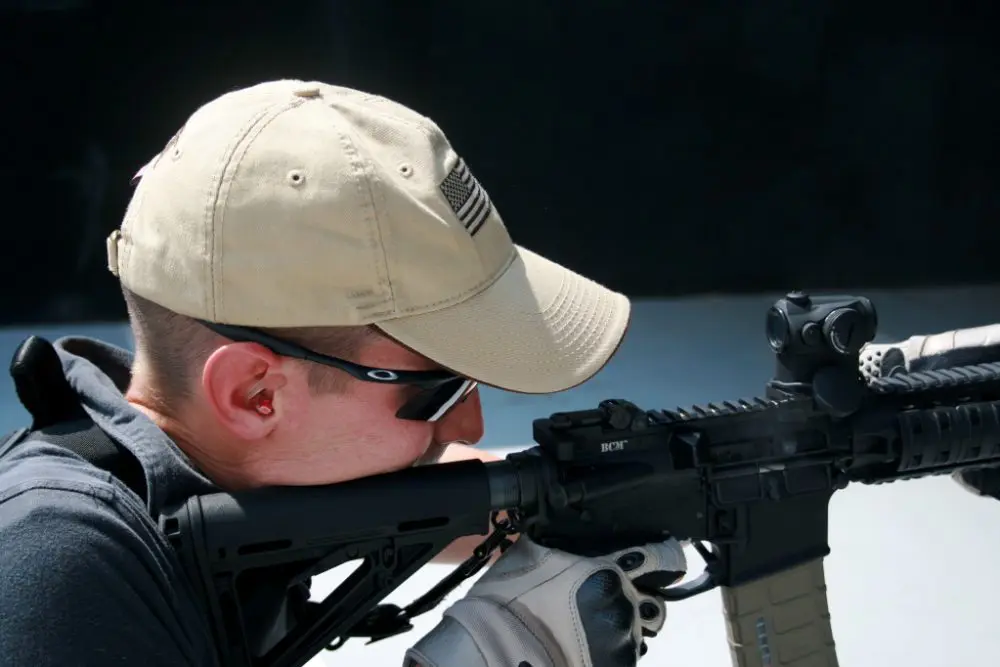
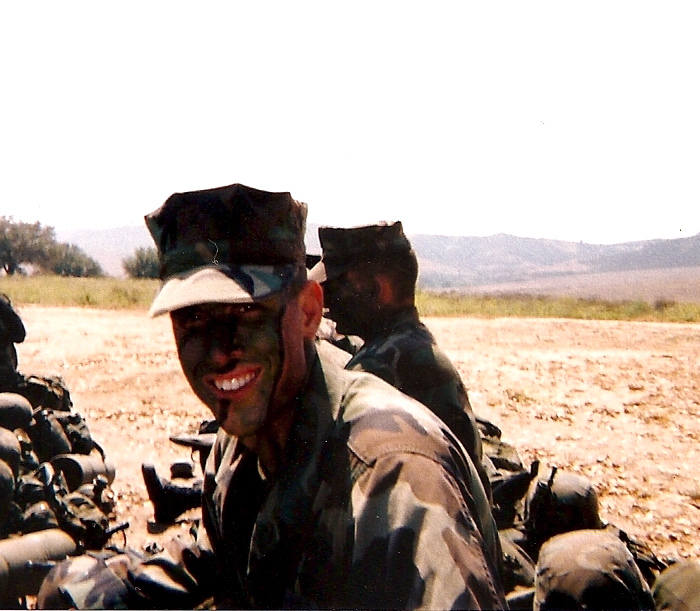
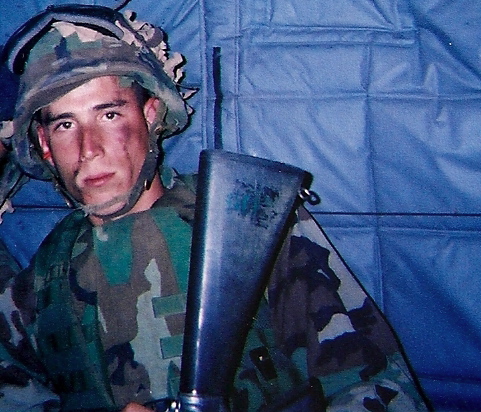






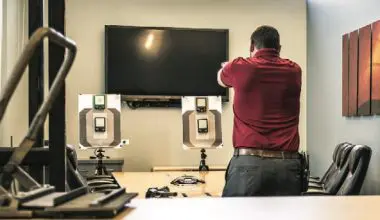
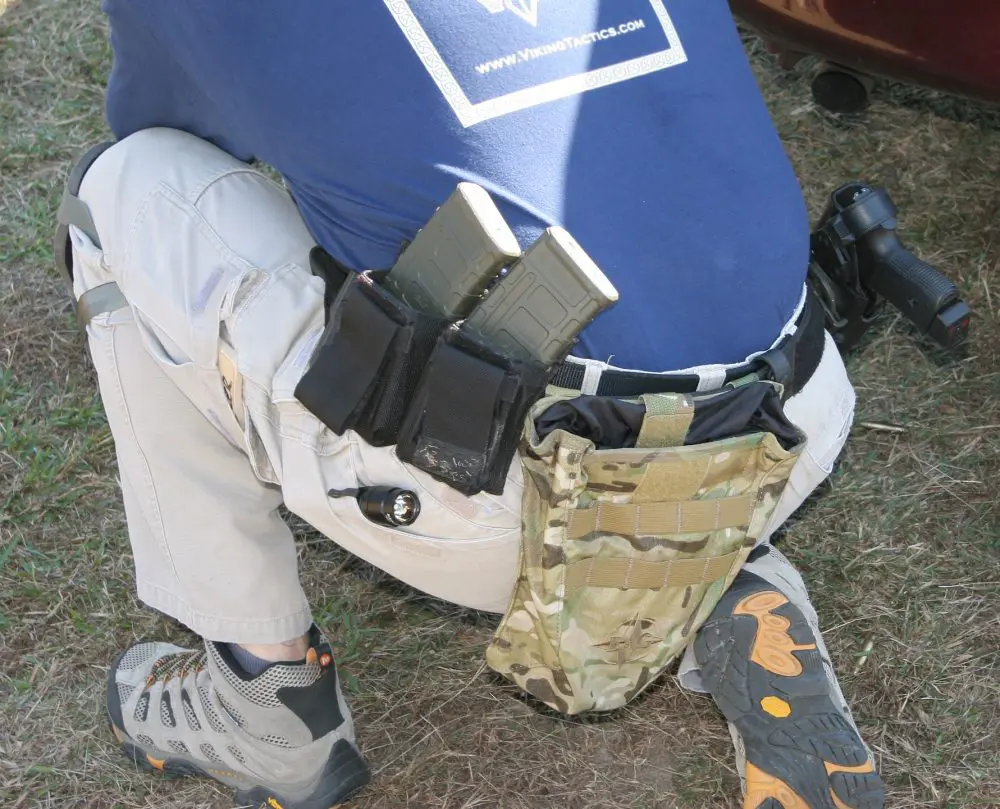
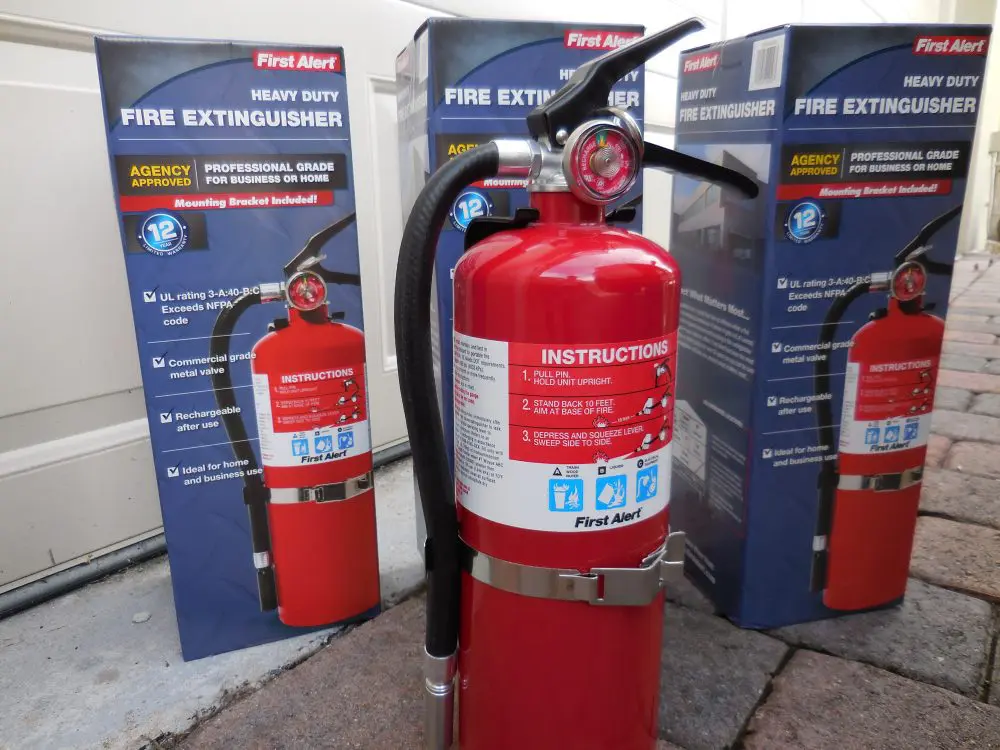
3 comments
Excellent review of a deadly experience, by the numbers. thank you for taking the time to share.